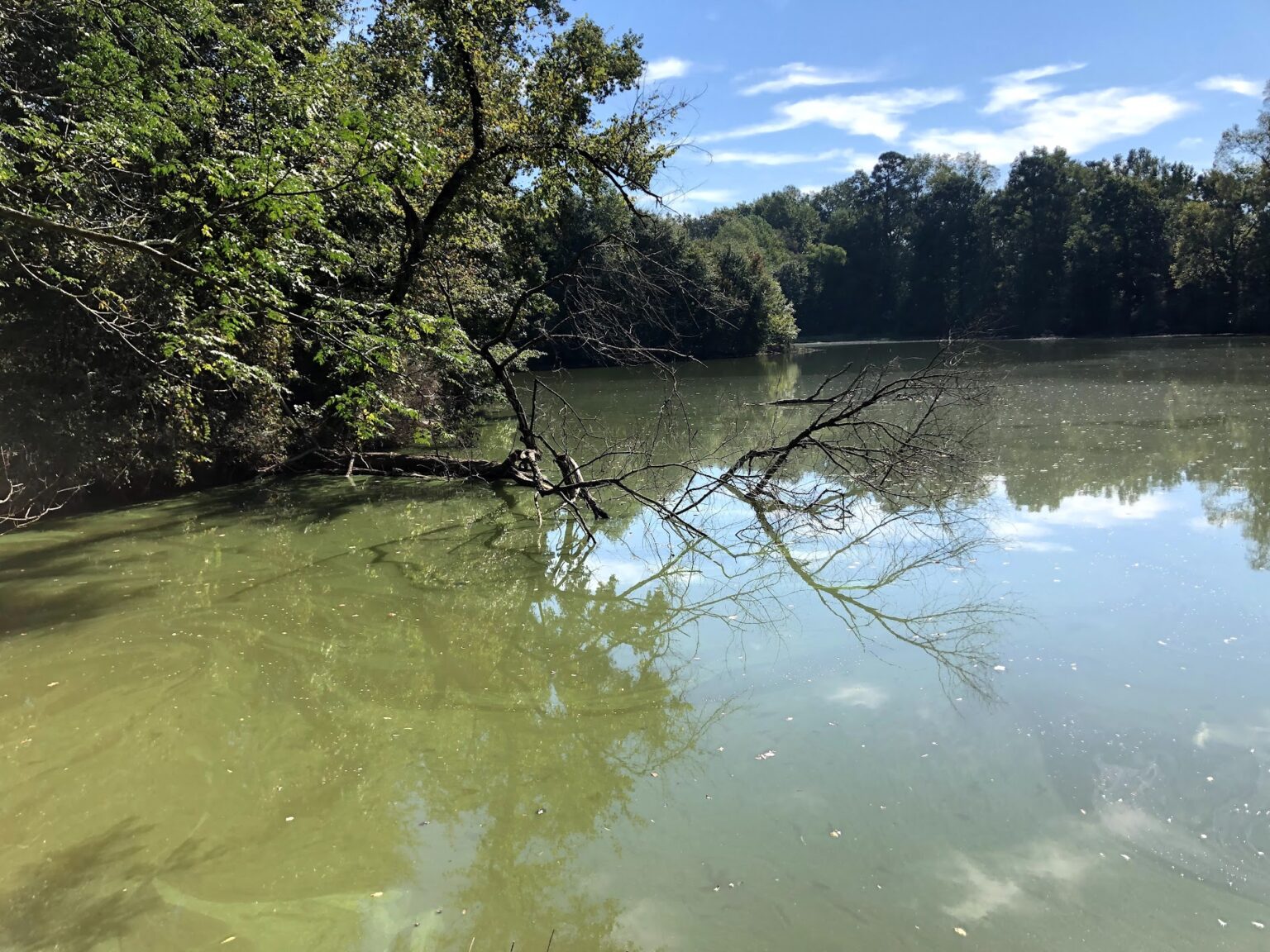All scientific research is collaborative, but this group of River Basin Center affiliates exemplified why interdisciplinary work is so important—with compelling results for freshwater policy. The Odum School of Ecology’s Rosemond Lab teamed up with policy experts to evaluate the efficacy of policies to reduce nutrient pollution. Nutrient pollution, specifically excess nitrogen and phosphorus, can drastically impact the function of rivers and lakes impair drinking water, impede recreation, and harm wildlife across the country.
Because the Clean Water Act delegates a lot of freshwater management to the state and local levels, there is considerable heterogeneity in how environmental policy is applied. Members of the Rosemond Lab—Dr. Amy Rosemond plus graduate students Laura Naslund, Carolyn Cummins, Phillip Bumpers, and Nathan Tomczyk—teamed up with policy expert and RBC affiliate Emily Bell—UGA School of Public and International Affairs—and looked at trends in nutrient concentrations and policy implementation across each state to see if federal policies appeared to reduce nutrient levels in freshwater sources. To calculate trends in nutrient pollution, the team used data from the EPA’s National Aquatic Resource Surveys (NARS), which assess the quality of rivers, ponds and lakes throughout the country.
Organizing the Project: National Water Quality
Creating a statistical value for how well policy is implemented is a bit tricky. The team chose to do this by looking to state water quality standards, which the Clean Water Act requires each state to create- however, only some states actually use numeric values to define acceptable nutrient levels. “States were asked to develop these [numeric criteria] quite a while ago, but only some states have done that so far,” Tomczyk explained. “We developed a scoring system that was based on whether their nutrient criteria applied to all water bodies, or just some water bodies in the state and how long they were implemented… some [states] had full nutrient criteria for the full study period and they got the most points.”
They also took into account each state’s spending from the EPA’s Section 319 Nonpoint Source Management Program, which establishes federal grants for state and local efforts to mitigate and reduce nonpoint source pollution. The group evaluated whether states that spent more and set clearer nutrient standards actually experienced greater reductions in nutrient pollution over time.
The intention of the project was originally to enter the NARS Data Challenge in 2022, but the team also wound up authoring a paper, finished in early 2023, that was recently accepted to Ambio. The Data Challenge was presented by the EPA last May to invite new environmental questions based on NARS data, with a particular focus on encouraging interdisciplinary work. “I think the genesis was really organic,” said Laura Naslund, describing how the team came to this project.
“What we wanted to do was have a collaborative process of writing a paper as a lab group,” Carolyn Cummins said. The group determined that Naslund and Tomczyk had contributed equally to the paper and should both be considered first authors, and they used an original method to determine whose name would appear first on the paper. “We internally facilitated best of 25 rock-paper-scissors tournament, and Dr. Rosemond and I refereed,” Cummins explained. Tomczyk, who recently successfully defended his PhD dissertation, won the tournament.
Beyond the Data: Interdisciplinary Results
The group also consulted policy experts to sort through the complicated data and its implications. “Trying to just get a grasp on the world of policy is a different process than just reading scientific literature,” Tomczyk said candidly about what led the group to reach out to environmental policy experts. “It was really helpful to have lots of conversations, like with Emily Bell and Meghan Klasic and JoAnn Burkholder, about their understanding of the sort of world of nutrient pollution management and the legal landscape around it.”
“It was refreshing to meet with the Rosemond Lab to learn about how they study nutrient pollution,” Emily Bell said. Bell was the group’s main policy expert and an author on the paper. She described how they combined strengths to explore the data’s implications. “Policy research generally places emphasis on the social side of the equation,” Bell explained, “but when we teamed up, I appreciated our synergies as we brainstormed potential drivers of the biophysical trends that they observed.”
So what did they find in this complex world of environmental policy and management? “On an aggregate at the state level, we cannot detect an effect,” Naslund said to simplify the results. In other words, the current federal approach and state implementation levels may not be sufficient to reduce nonpoint source nutrient pollution. Dr. Amy Rosemond quoted the paper’s final conclusion: “’Business as usual,’ you know, ‘is not addressing nutrient pollution.’”
“I’m so proud of the lab group for creating this collaboration and for deciding to start in on some analyses that are nationally important,” Dr. Rosemond said of her team. “I think the results are sobering, but they shouldn’t be viewed as nihilistic. I think our results suggest that nutrient control is just not being done at the right scale to match the problem.”
The NARS Data Challenge specifically encouraged multi-disciplinary research for tackling “critical water quality issues” using this data, and this team definitely captured that goal. Phillip Bumpers, research professional at the River Basin Center and the Rosemond Lab, praised the interdisciplinary aspect of the project. “All papers this day and age are primarily collaborative,” he said, “but they’re not necessarily collaborative from the first word on a paper, and this really was.”
Update: The resulting paper, “Nonpoint source pollution measures in the Clean Water Act have no detectable impact on decadal trends in nutrient concentrations in U.S. inland waters” was published in Ambio in June of 2023. Tomczyk, Cummins and Naslund were awarded $5,000 from their submission to the EPA National Aquatic Resource Surveys Data Analysis Innovation Challenge for this project, winning the challenge.

